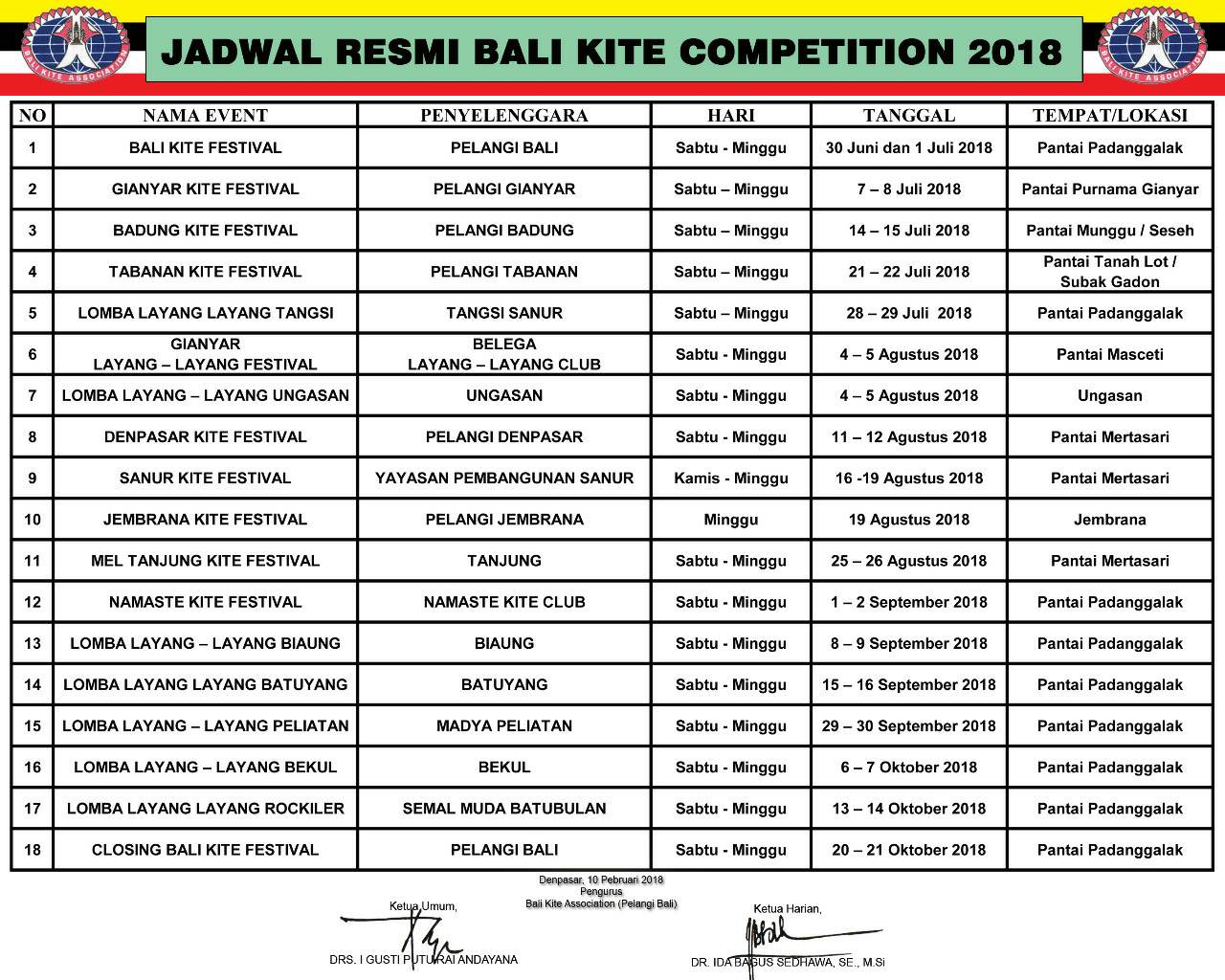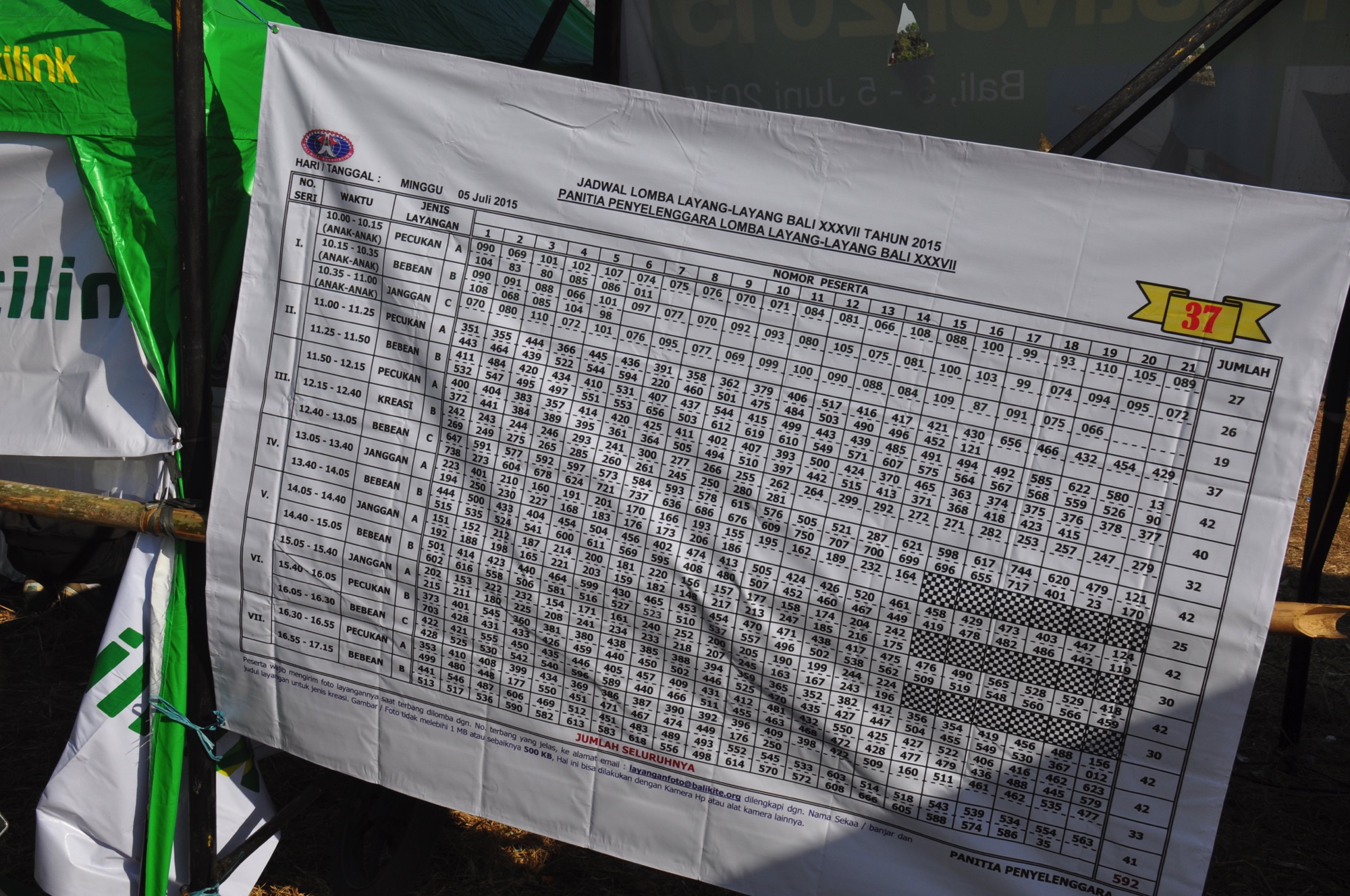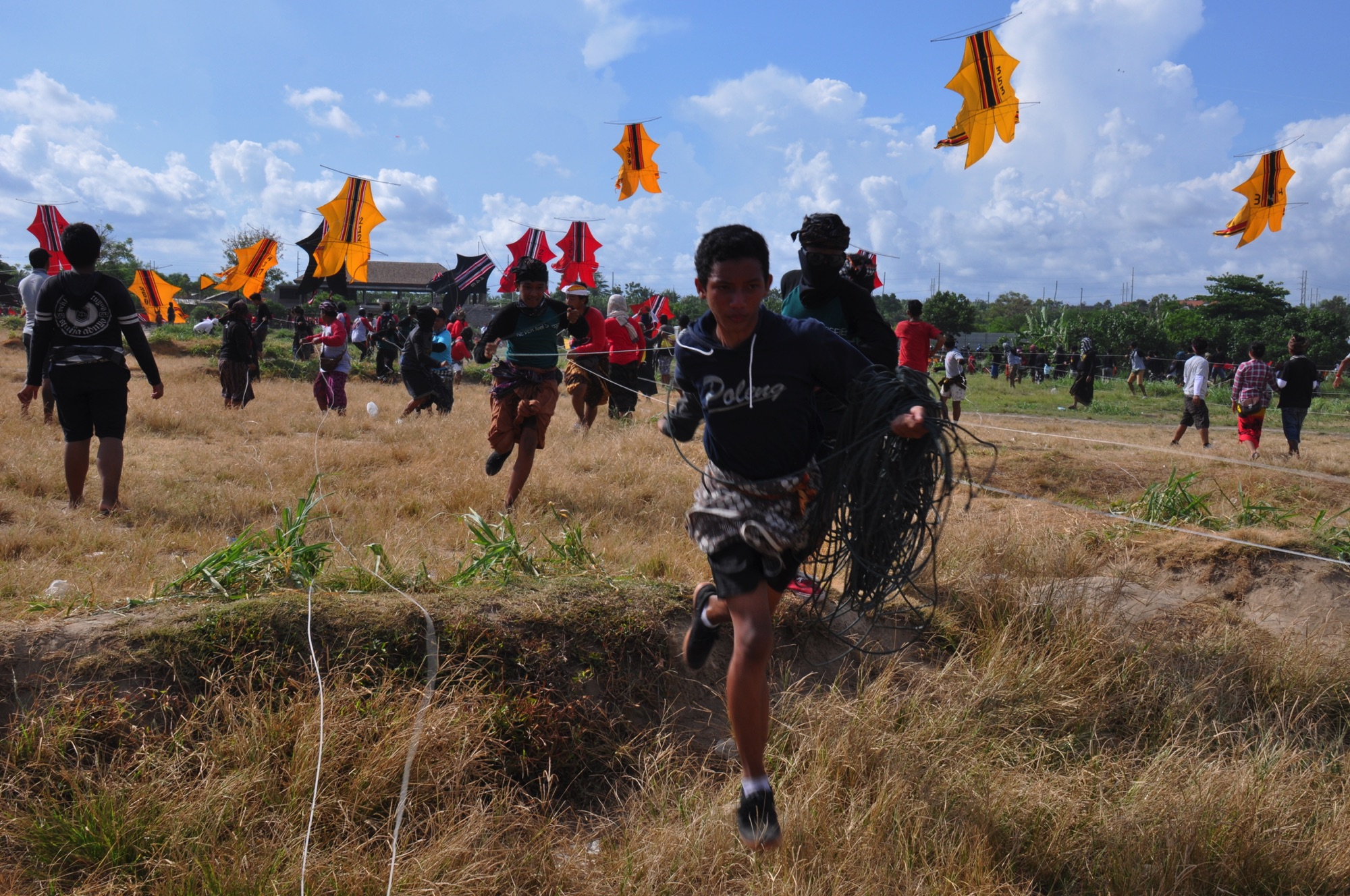Introduction to kite competitions in Bali.
As much as kite flying is something that many Balinese do for the sheer joy of it, the kite competitions have also become very important. Winning in kite competitions is very prestigious, and boys and men put their hearts into it.
In Bali the good stable winds start to blow in May and that is also when the new kite flying season starts. Many individuals, families, groups and banjars (a Balinese community type) have built new kites during the rainy season and are now anxious to get them flying, sometimes in preparation and tuning for the upcoming competitions.
There are kite competitions practically every weekend during the period June – October. These competitions are called “Kite Festival”, but they are not festivals in the Western sense of the word: they are serious competitions from morning till evening. The competition can be organized by a team, by a banjar, by a village or by Bali Kite Association.
Bali Kite Association organized the first competition in 1979. Year by year more kite competitions have been organized by them but also by others than the association.
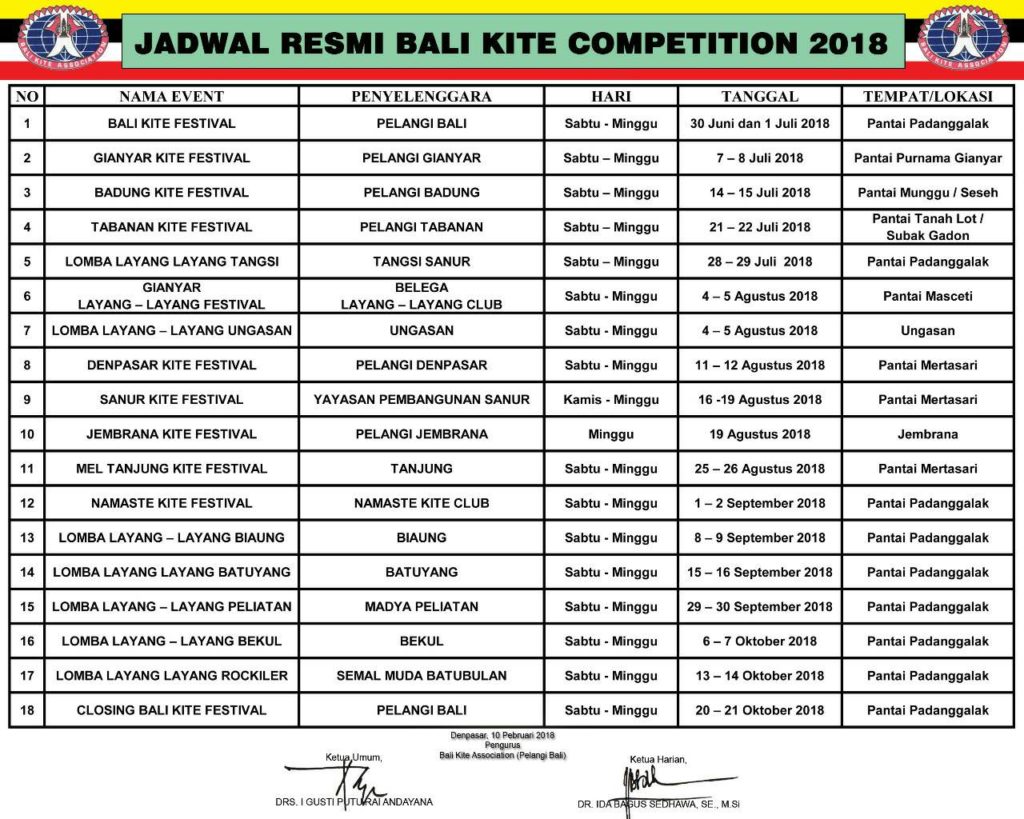
In March/April the Bali Kite Association publishes a schedule for most of the competitions during the season. The main one, organized by the association, usually is the first in the competition season. This competition is called “Bali Kite Festival” but a more fitting name is Bali Kite Championships, since kite makers from all over Bali come to participate, and winning here is very prestigious.
Lomba means ‘competition’, layang-layang means ‘kite’.
2018 competition scheduleIn good time before a competition the participants have to register their kites. There is a registration fee for each kite, and the amount depends on the category and the size. The fees then constitute the prize money at the competition. Every organizer has an office where the kites can be registered, and at registration time each kite is given a number. The number has then to be applied to the kite and be well visible as the kite flies during the competition.
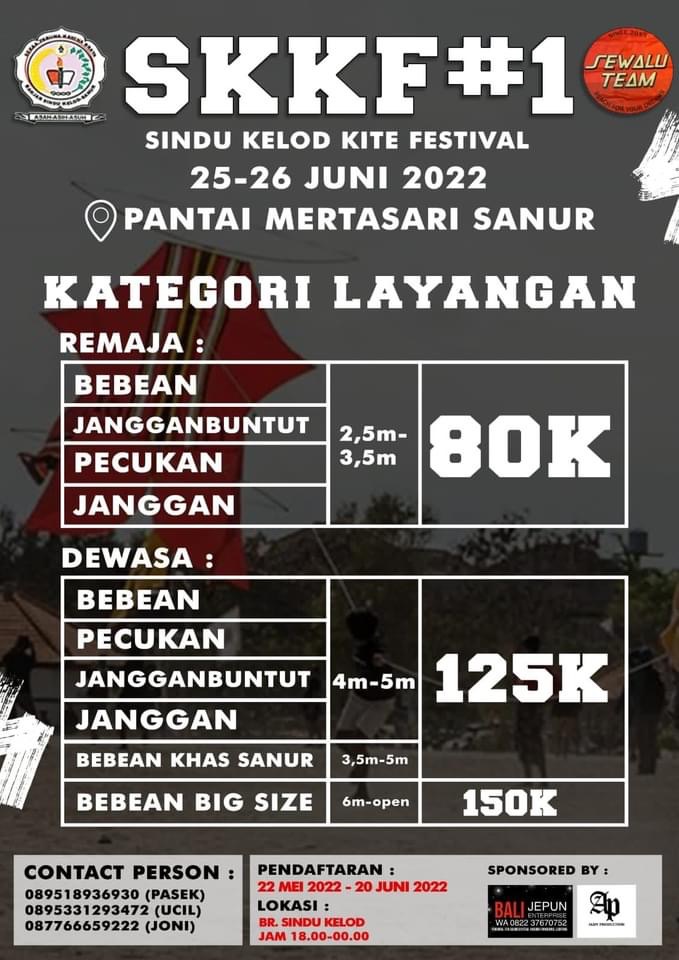
A poster for the first Sindu Kelod Kite Festival 25-26 June 2022 at Merta Sari Beach.
In this poster the kite categories are split into two blocks; the top one for Remaja, i.e. youngsters up to 15 years old. The kites they can register are Bebean, Janggan Buntut, Pecukan and Janggan. These should have a wing span of 2.5 to 3.5 meters and the registration fee for all are 80 000 rupiah (around 5 €) for each.
The next block is for Dewasa, adults, and they can register the same categories of kites plus Bebean in Sanur style and Bebean Big Size. The wing span for the first four categories should be 4 to 5 meters, for the Sanur style Bebean 3.5 to 5 meters and for Bebean Big Size over 6 meters. The registration fee for these are 125 000 rupiah (around 8 €), except for the Bebean Big Size where the fee is 150 000 rupiah (around 11.5 €).
The kites can be registered between May 22 and June 20 at the location given.
Sometimes the blocks are split according to building material rather than the fliers age: Plastik and Kain (nylon cloth).
The different types of Balinese kites are described HERE.
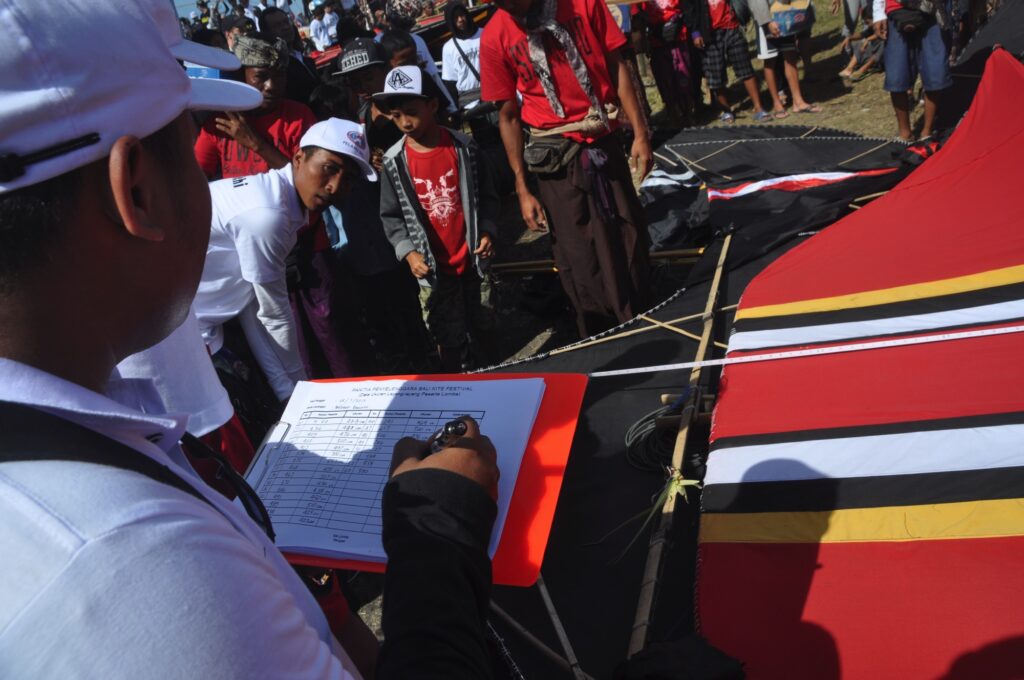
The wing span of each kite is measured and checked when entering the competition field.
For the competition a schedule is prepared with time slots (heats) of 15 – 30 minutes for alternating categories of kites. At each slot the category of kite is stated and all the kites, using the numbers given at registration, that should fly during that slot. The count of kites in a slot can vary from just a few up to over 80 kites.

Competition schedule for the Sunday, the third day, of Bali Kite Championships 2015.
The first hour is for Anak-anak, children up to 12 year old.
For each heat the numbers given at registration are listed. The count of kites in each heat is in the rightmost column. The total number of kites in Sunday’s competition is 592.
Schedule in full size
At the competition the heats are controlled with a flag system:
- Yellow flag – Prepare your kite.
- Black flag – Fly your kite.
- Red flag – Bring down your kite.
All participants are very disciplined: they have the competition schedule in hand, keeping track of which slot is active, and when their turn is approaching they start their preparations. Usually they start entering the kite field already when the current slot is under red flag, and during the yellow flag the pull out the long line to be able to make a long running launch.
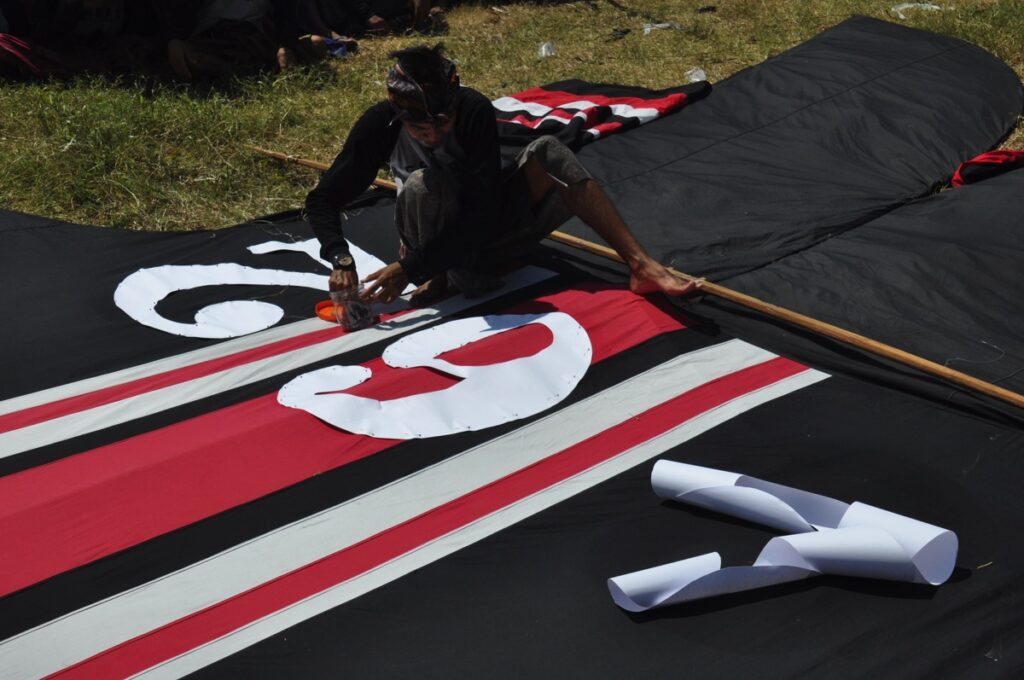
Applying the given competition number on the kite.
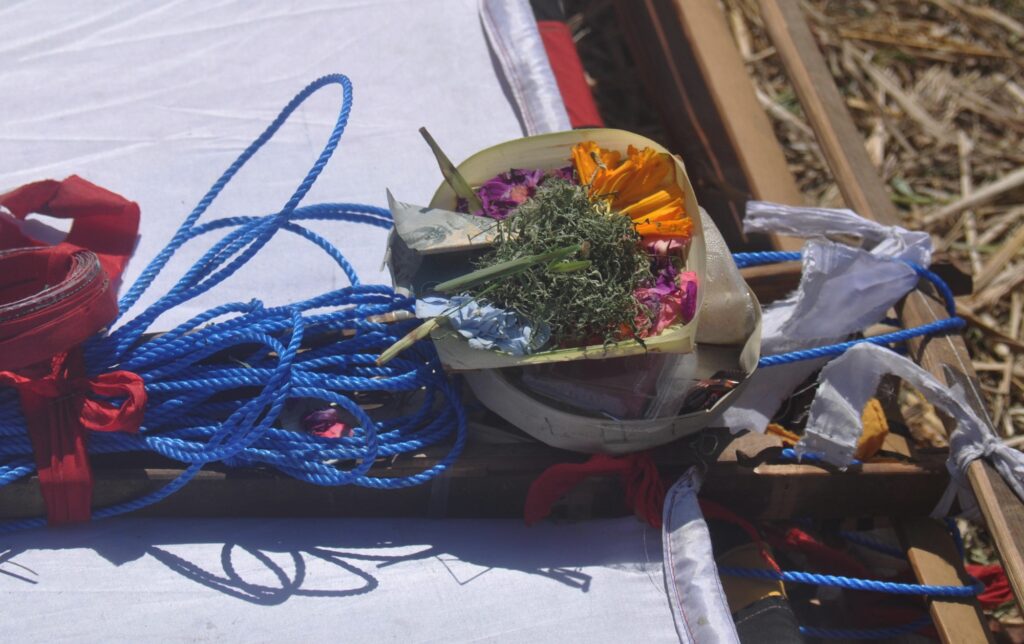
Before the flight of the kite a small ceremony with an offering to the kite god Rare Angon is held.

When the black flag goes up all teams simultaneously start long running launches.
Full size of running launch pictureA number of judges are judging the kites in the sky. They note down the kite’s registration number and look at certain criteria.

For a Bebean the judges give points for:
- The launch of the kite – it should launch straight up.
- The flight – a Bebean is a fish so it should ‘swim’ in a gentle figure-of-eight movement. Not too much and not too little.
- The sound of the two guangs – the hummers, the male in the front and the female at the waist/rear, should make a good harmony.
- The graphics of the kite.

